755 start with P start with P


Pacific Art in Detail introduces the riches of Oceanic art through astonishing close-up views of rarely seen treasures, allowing behind-the-scenes insight into this vibrant work that no conventional gallery tour affords. Carefully selected pieces from the world-renowned Oceanic collection at the British Museum—by artists employing a wide variety of materials and techniques—illustrate such major themes as the role of artistic creation in land and ocean management, political and spiritual power, and connections to gods and ancestors.
Jenny Newell’s introduction addresses the question “What is Pacific art?” while short texts place each individual object into its cultural context. Handsome photographs of each complete work are displayed alongside these fine details, to allow for intriguing comparisons between seemingly unrelated objects and media.
Evoking the hand and eye of the most accomplished Pacific artists and craft workers, past and present, these details spur the creative imagination and serve as an astute introduction to Oceanic collections in museums around the world.

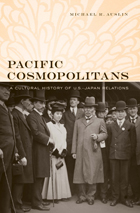
Decades before Americans cheered on Ichiro Suzuki, Japanese baseball fans swooned over Babe Ruth. And a century prior to the craze for anime and manga, American art collectors hoarded Japanese woodblock prints. Few relationships can match the depth, or importance, of the cultural ties between America and Japan over the past two hundred years. In Pacific Cosmopolitans, Michael Auslin tells this absorbing history in full for the first time.
From the moment adventurers reached each other's shores in the early 1800s, cultural encounter formed the bedrock of U.S.–Japan ties. Such casual connections turned into formal cultural exchange within the emerging global society of the late nineteenth century. As both countries became great powers, new cultural institutions supplemented political ties and helped promote economic trade, shaping the Pacific world yet becoming entangled in controversy. These trans-Pacific activities faced critics in both countries and were overwhelmed by rising nationalism and geopolitical crisis in the early twentieth century.
In the decades since World War II, however, U.S.–Japan cultural exchange has again been seen as a crucial means to strengthen the bonds between the two nations. Bringing together philanthropists like the Rockefeller family and artists like Akira Kurosawa, along with untold numbers of ordinary Americans and Japanese, the acolytes of exchange continue to believe that cross-cultural understanding will promote a more peaceful future, even in the face of competing national interests.

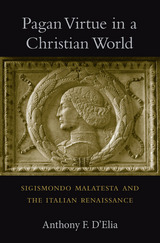
In 1462 Pope Pius II performed the only reverse canonization in history, publicly damning a living man. The target was Sigismondo Malatesta, Lord of Rimini and a patron of the arts with ties to the Florentine Renaissance. Condemned to an afterlife of torment, he was burned in effigy in several places in Rome. What had this cultivated nobleman done to merit such a fate?
Pagan Virtue in a Christian World examines anew the contributions and contradictions of the Italian Renaissance, and in particular how the recovery of Greek and Roman literature and art led to a revival of pagan culture and morality in fifteenth-century Italy. The court of Sigismondo Malatesta (1417–1468), Anthony D’Elia shows, provides a case study in the Renaissance clash of pagan and Christian values, for Sigismondo was nothing if not flagrant in his embrace of the classical past. Poets likened him to Odysseus, hailed him as a new Jupiter, and proclaimed his immortal destiny. Sigismondo incorporated into a Christian church an unprecedented number of zodiac symbols and images of the Olympian gods and goddesses and had the body of the Greek pagan theologian Plethon buried there.
In the literature and art that Sigismondo commissioned, pagan virtues conflicted directly with Christian doctrine. Ambition was celebrated over humility, sexual pleasure over chastity, muscular athleticism over saintly asceticism, and astrological fortune over providence. In the pagan themes so prominent in Sigismondo’s court, D’Elia reveals new fault lines in the domains of culture, life, and religion in Renaissance Italy.

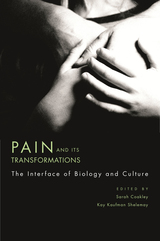
Pain is immediate and searing but remains a deep mystery for sufferers, their physicians, and researchers. As neuroscientific research shows, even the immediate sensation of pain is shaped by psychological state and interpretation. At the same time, many individuals and cultures find meaning, particularly religious meaning, even in chronic and inexplicable pain.
This ambitious interdisciplinary book includes not only essays but also discussions among a wide range of specialists. Neuroscientists, psychiatrists, anthropologists, musicologists, and scholars of religion examine the ways that meditation, music, prayer, and ritual can mediate pain, offer a narrative that transcends the sufferer, and give public dignity to private agony. They discuss topics as disparate as the molecular basis of pain, the controversial status of gate control theory, the possible links between the relaxation response and meditative practices in Christianity and Buddhism, and the mediation of pain and intense emotion in music, dance, and ritual. The authors conclude by pondering the place of pain in understanding--or the human failure to understand--good and evil in history.

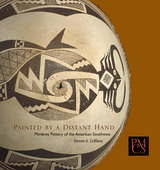


Painted Words presents a facsimile, decipherment, and analysis of a seventeenth-century pictographic catechism from colonial Mexico, preserved as Fonds Mexicain 399 at the Bibliothèque Nationale de France. Works in this genre present the Catholic catechism in pictures that were read sign by sign as aids to memorization and oral performance. They have long been understood as a product of the experimental techniques of early evangelization, but this study shows that they are better understood as indigenous expressions of devotional knowledge.
In addition to inventive pictography to recount the catechism, this manuscript features Nahuatl texts that focus on don Pedro Moteuczoma, son of the Mexica ruler Moteuczoma the Younger, and his home, San Sebastián Atzaqualco. Other glosses identify figures drawn within the manuscript as Nahua and Spanish historical personages, as if the catechism had been repurposed as a dynastic record. The end of the document displays a series of Nahua and Spanish heraldic devices.
These combined pictorial and alphabetic expressions form a spectacular example of how colonial pictographers created innovative text genres, through which they reimagined pre-Columbian writing and early evangelization—and ultimately articulated newly emerging assertions of indigenous identity and memorialized native history.
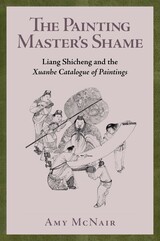
Overturning the long-held assumption that the Xuanhe Catalogue of Paintings was the work of the Northern Song emperor Huizong (r. 1100–1126), Amy McNair argues that it was compiled instead under the direction of Liang Shicheng. Liang, a high-ranking eunuch official who sought to raise his social status from that of despised menial to educated elite, had privileged access to the emperor and palace. McNair’s study, based on her translation and extensive analysis of the text of the Xuanhe Catalogue of Paintings, offers a definitive argument for the authorship of this major landmark in Chinese painting criticism and clarifies why and how it was compiled.
The Painting Master’s Shame describes the remarkable circumstances of the period around 1120, when the catalogue was written. The political struggles over the New Policies, the promotion of the “scholar amateur” ideal in painting criticism and practice, and the rise of eunuch court officials as a powerful class converged to allow those officials the unprecedented opportunity to enhance their prestige through scholarly activities and politics. McNair analyzes the catalogue’s central polemical narrative—the humiliation of the high-ranking minister mistakenly called by the lowly title “Painting Master”—as the key to understanding Liang Shicheng’s methods and motives.
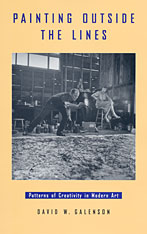
Why have some great modern artists—including Picasso—produced their most important work early in their careers while others—like Cézanne—have done theirs late in life? In a work that brings new insights, and new dimensions, to the history of modern art, David Galenson examines the careers of more than 100 modern painters to disclose a fascinating relationship between age and artistic creativity.
Galenson’s analysis of the careers of figures such as Monet, Seurat, Matisse, Pollock, and Jasper Johns reveals two very different methods by which artists have made innovations, each associated with a very different pattern of discovery over the life cycle. Experimental innovators, like Cézanne, work by trial and error, and arrive at their most important contributions gradually. In contrast, Picasso and other conceptual innovators make sudden breakthroughs by formulating new ideas. Consequently, experimental innovators usually make their discoveries late in their lives, whereas conceptual innovators typically peak at an early age.
A novel contribution to the history of modern art, both in method and in substance, Painting outside the Lines offers an enlightening glimpse into the relationship between the working methods and the life cycles of modern artists. The book’s explicit use of simple but powerful quantitative techniques allows for systematic generalization about large numbers of artists—and illuminates significant but little understood features of the history of modern art. Pointing to a new and richer understanding of that history, from Impressionism to Abstract Expressionism and beyond, Galenson’s work also has broad implications for future attempts to understand the nature of human creativity in general.

Pairs is a student-led journal at the Harvard University Graduate School of Design (GSD) dedicated to conversations about design. Each annual issue is conceptualized by an editorial team that proposes guests and objects to be in dialogue with one another. Pairs is non-thematic, meant instead for provisional thoughts and ideas in progress. Each issue seeks to organize diverse threads and concerns that are perceived to be relevant to our moment. Thus, Pairs creates a space for understanding and a greater degree of exchange, both between the design disciplines and with a larger public.
Pairs 03 features conversations with Thomas Demand, Mindy Seu, Mira Henry and Matthew Au, Alfredo Thiermann, Ila Bêka and Louise Lemoine, Anne Lacaton, Edward Eigen, Katarina Burin, Marrikka Trotter, Christopher C. M. Lee, Keller Easterling, and others. Contributors include the editors and Elif Erez, Emily Hsee, Stephanie Lloyd, Andrea Sandell, Kenismael Santiago-Págan, Klelia Siska, and Julia Spackman.


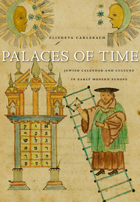
From one of the leading historians of the Jewish past comes a stunning look into a previously unexamined dimension of Jewish life and culture: the calendar. In the late sixteenth century, Pope Gregory XIII instituted a momentous reform of Western timekeeping, and with it a period of great instability. Jews, like all minority cultures in Europe, had to realign their time-keeping to accord with the new Christian calendar.
Elisheva Carlebach shows that the calendar is a complex and living system, constantly modified as new preoccupations emerge and old priorities fade. Calendars serve to structure time and activities and thus become mirrors of experience. Through this seemingly mundane and all-but-overlooked document, we can reimagine the quotidian world of early modern Jewry, of market days and sacred days, of times to avoid Christian gatherings and times to secure communal treasures. In calendars, we see one of the central paradoxes of Jewish existence: the need to encompass the culture of the other while retaining one’s own unique culture. Carlebach reveals that Jews have always lived in multiple time scales, and demonstrates how their accounting for time, as much as any cultural monument, has shaped Jewish life.
After exploring Judaica collections around the world, Carlebach brings to light these textually rich and beautifully designed repositories of Jewish life. With color illustrations throughout, this is an evocative illumination of how early modern Jewish men and women marked the rhythms and realities of time and filled it with anxieties and achievements.

Whether in the context of off-shore oil exploration or pure research, the oceans of the geological past have never been of more compelling interest. The recent expansion in oceanographic studies has produced a burgeoning of data on ancient ocean circulation, climate, bathymetry, chemistry, biology, and temperature data that now should be considered in a more general geological and paleontological framework.
Schopf has produced a remarkable synthesis of these data that provides any earth scientist with the background necessary to appreciate the history of the ancient oceans. Each of his seven chapters includes a summary of modern conditions, a major section on methods for determining ancient patterns, and a summary of each oceanographic factor over geological time.
Paleoceanography will serve as an important resource for paleontologists and for a much broader audience of earth and ocean scientists, petroleum geologists, and stratigraphers.

Challenging the claim that Palestine’s peasant economy progressed during the 1920s and 1930s, Amos Nadan skillfully integrates a wide variety of sources to demonstrate that the period was actually one of deterioration on both the macro (per capita) and micro levels.
The economy would have most likely continued its downward spiral during the 1940s had it not been for the temporary prosperity that resulted from World War II. Nadan argues that this deterioration continued despite the British authorities’ channeling of funds from the Jewish sector and the wealthier Arab sectors into projects for the Arab rural economy. The British were hoping that Palestine’s peasants would not rebel if their economic conditions improved. These programs were, on the whole, defective because the British chose programs based on an assumption that the peasants were too ignorant to manage their farms wisely, instead of working with the peasants and their own institutions.

In a timely reminder of how the past informs the present, Baruch Kimmerling and Joel Migdal offer an authoritative account of the history of the Palestinian people from their modern origins to the Oslo peace process and beyond.
Palestinians struggled to create themselves as a people from the first revolt of the Arabs in Palestine in 1834 through the British Mandate to the impact of Zionism and the founding of Israel. Their relationship with the Jewish people and the State of Israel has been fundamental in shaping that identity, and today Palestinians find themselves again at a critical juncture. In the 1990s cornerstones for peace were laid for eventual Palestinian-Israeli coexistence, including mutual acceptance, the renunciation of violence as a permanent strategy, and the establishment for the first time of Palestinian self-government. But the dawn of the twenty-first century saw a reversion to unmitigated hatred and mutual demonization. By mid-2002 the brutal violence of the Intifada had crippled Palestine's fledgling political institutions and threatened the fragile social cohesion painstakingly constructed after 1967. Kimmerling and Migdal unravel what went right--and what went wrong--in the Oslo peace process, and what lessons we can draw about the forces that help to shape a people. The authors present a balanced, insightful, and sobering look at the realities of creating peace in the Middle East.

The future of the West Bank and Gaza remains the single most crucial issue in the search for peace in the Middle East. Examining the entire range of possible outcomes, Mark Heller argues that an independent Palestinian state in those territories, even one dominated by the PLO, could, under certain stringent conditions, be the preferred option for Israel.
In the first comprehensive treatment of the political, social, economic, and military factors bearing on the disposition of the West Bank and Gaza, Heller sets forth the possible alternatives—annexation by Israel, perpetuation of the status quo, federal or communal arrangements, and territorial compromise within the framework of the Jordanian option—and evaluates their implications for Israeli security.
Heller outlines the conditions under which he believes the establishment of a Palestinian state could be the optimal solution. He also discusses the economic prospects of a Palestinian state and the future of Jerusalem. His analysis is the boldest attempt yet to come to grips with the Palestinian question and the future of Israel. No one interested in the pursuit of a peaceful settlement of the Israeli–Arab conflict can afford to ignore this book.

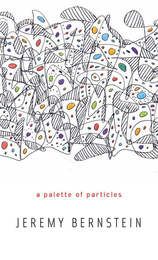
From molecules to stars, much of the cosmic canvas can be painted in brushstrokes of primary color: the protons, neutrons, and electrons we know so well. But for meticulous detail, we have to dip into exotic hues—leptons, mesons, hadrons, quarks. Bringing particle physics to life as few authors can, Jeremy Bernstein here unveils nature in all its subatomic splendor.
In this graceful account, Bernstein guides us through high-energy physics from the early twentieth century to the present, including such highlights as the newly discovered Higgs boson. Beginning with Ernest Rutherford’s 1911 explanation of the nucleus, a model of atomic structure emerged that sufficed until the 1930s, when new particles began to be theorized and experimentally confirmed. In the postwar period, the subatomic world exploded in a blaze of unexpected findings leading to the theory of the quark, in all its strange and charmed variations. An eyewitness to developments at Harvard University and the Institute for Advanced Study in Princeton, Bernstein laces his story with piquant anecdotes of such luminaries as Wolfgang Pauli, Murray Gell-Mann, and Sheldon Glashow.
Surveying the dizzying landscape of contemporary physics, Bernstein remains optimistic about our ability to comprehend the secrets of the cosmos—even as its mysteries deepen. We now know that over eighty percent of the universe consists of matter we have never identified or detected. A Palette of Particles draws readers into the excitement of a field where the more we discover, the less we seem to know.

This is the first volume of a four-volume set that will reprint in their entirety the texts of 72 pamphlets relating to the Anglo-American controversy that were published in America in the years 1750–1776. They have been selected from the corpus of the pamphlet literature on the basis of their importance in the growth of American political and social ideas, their role in the debate with England over constitutional rights, and their literary merit. All of the best known pamphlets of the period, such as James Otis’s Rights of the British Colonies (1764), John Dickinson’s Farmer’s Letters (1768), and Thomas Paine’s Common Sense (1776) are to be included. In addition there are lesser known ones particularly important in the development of American constitutional thought: Stephen Johnson’s Some Important Observations (1766), John Joachim Zubly’s An Humble Enquiry (1769), Ebenezer Baldwin’s An Appendix Stating the Heavy Grievances (1774), and Four Letters on Interesting Subjects (1776). There are also pamphlets illustrative of the sheer vituperation of the Revolutionary polemics, and others selected for their more elevated literary merit. Both sides of the Anglo-American dispute and all genres of expression—poetry, dramatic dialogues, sermons, treatises, documentary collections, political “position papers”—that appeared in this form are included.
Each pamphlet is introduced by an essay written by the editor containing a biographical sketch of the author of the document, an analysis of the circumstances that led to the writing of it, and an interpretation of its contents. The texts are edited for the convenience of the modern reader according to a scheme that preserves scrupulously the integrity of every word written but that frees the text from the encumbrances of eighteenth-century printing practices. All references to writings, people, and events that are not obvious to the informed modern reader are identified in the editorial apparatus and where necessary explained in detailed notes.
This first volume of the set contains the texts of 14 pamphlets through the year 1765. It presents, in addition, a book-length General Introduction by Bernard Bailyn on the ideology of the American Revolution. In the seven chapters of this essay the ideological origins and development of the Revolutionary movement are analyzed in the light of the study of the pamphlet literature that went into the preparation of these volumes. Bailyn explains that close analysis of this literature allows one to penetrate deeply into the colonists’ understanding of the events of their time; to grasp more clearly than is otherwise possible the sources of their ideas and their motives in rebelling; and, above all, to see the subtle, fundamental transformation of eighteenth-century constitutional thought that took place during these years of controversy and that became basic doctrine in America thereafter.
Bailyn stresses particularly the importance in the development of American thought of the writings of a group of early eighteenth-century English radicals and opposition politicians who transmitted to the colonists most directly the seventeenth-century tradition of anti-authoritarianism born in the upheaval of the English Civil War. In the context of this seventeenth- and early eighteenth-century tradition one sees the political importance in the Revolutionary movement of concepts the twentieth century has generally dismissed as mere propaganda and rhetoric: “slavery,” “conspiracy,” “corruption.” It was the meaning these concepts imparted to the events of the time, Bailyn suggests, as well as the famous Lockean notions of natural rights and social and governmental compacts, that accounts for the origins and the basic characteristics of the American Revolution.




Winner of the Norman B. Tomlinson, Jr. Prize
“The best large-scale synthesis in any language of what we currently know and understand about this multidimensional, cataclysmic conflict.”
—Richard J. Evans, Times Literary Supplement
In this monumental history of the First World War, Germany’s leading historian of the period offers a dramatic account of its origins, course, and consequences. Jörn Leonhard treats the clash of arms with a sure feel for grand strategy. He captures the slow attrition, the race for ever more destructive technologies, and the grim experiences of frontline soldiers. But the war was more than a military conflict and he also gives us the perspectives of leaders, intellectuals, artists, and ordinary men and women around the world as they grappled with the urgency of the moment and the rise of unprecedented political and social pressures. With an unrivaled combination of depth and global reach, Pandora’s Box reveals how profoundly the war shaped the world to come.
“[An] epic and magnificent work—unquestionably, for me, the best single-volume history of the war I have ever read…It is the most formidable attempt to make the war to end all wars comprehensible as a whole.”
—Simon Heffer, The Spectator
“[A] great book on the Great War…Leonhard succeeds in being comprehensive without falling prey to the temptation of being encyclopedic. He writes fluently and judiciously.”
—Adam Tooze, Die Zeit
“Extremely readable, lucidly structured, focused, and dynamic…Leonhard’s analysis is enlivened by a sharp eye for concrete situations and an ear for the voices that best convey the meaning of change for the people and societies undergoing it.”
—Christopher Clark, author of The Sleepwalkers
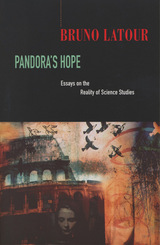
A scientist friend asked Bruno Latour point-blank: “Do you believe in reality?” Taken aback by this strange query, Latour offers his meticulous response in Pandora’s Hope. It is a remarkable argument for understanding the reality of science in practical terms.
In this book, Latour, identified by Richard Rorty as the new “bête noire of the science worshipers,” gives us his most philosophically informed book since Science in Action. Through case studies of scientists in the Amazon analyzing soil and in Pasteur’s lab studying the fermentation of lactic acid, he shows us the myriad steps by which events in the material world are transformed into items of scientific knowledge. Through many examples in the world of technology, we see how the material and human worlds come together and are reciprocally transformed in this process.
Why, Latour asks, did the idea of an independent reality, free of human interaction, emerge in the first place? His answer to this question, harking back to the debates between Might and Right narrated by Plato, points to the real stakes in the so-called science wars: the perplexed submission of ordinary people before the warring forces of claimants to the ultimate truth.


The Pantheon in Rome is one of the grand architectural statements of all ages. This richly illustrated book isolates the reasons for its extraordinary impact on Western architecture, discussing the Pantheon as a building in its time but also as a building for all time.
Mr. MacDonald traces the history of the structure since its completion and examines its progeny--domed rotundas with temple-fronted porches built from the second century to the twentieth--relating them to the original. He analyzes the Pantheon's design and the details of its technology and construction, and explores the meaning of the building on the basis of ancient texts, formal symbolism, and architectural analogy. He sees the immense unobstructed interior, with its disk of light that marks the sun's passage through the day, as an architectural metaphor for the ecumenical pretensions of the Roman Empire.
Past discussions of the Pantheon have tended to center on design and structure. These are but the starting point for Mr. MacDonald, who goes on to show why it ranks--along with Cheops's pyramid, the Parthenon, Wren's churches, Mansard's palaces-as an architectural archetype.

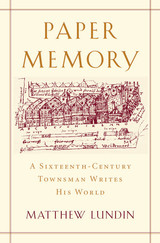
Paper Memory tells the story of one man’s mission to preserve for posterity the memory of everyday life in sixteenth-century Germany. Matthew Lundin takes us inside the mind of an undistinguished German burgher named Hermann Weinsberg, whose personal writings allow us to witness firsthand the great transformations of early modernity: the crisis of the Reformation, the rise of an urban middle class, and the information explosion of the print revolution. This sensitive, faithful portrait reveals a man who sought to make sense of the changes that were unsettling the foundations of his world.
Weinsberg’s decision to undertake the monumental task of documenting his life was astonishing, since he was neither prince nor bishop, but a Catholic lawyer from Cologne with no special claim to fame or fortune. Although he knew that his contemporaries would consider his work vain and foolish, he dutifully recorded the details of his existence, from descriptions of favorite meals to catalogs of his sleeping habits, from the gossip of quarreling neighbors to confessions of his private hopes, fears, and beliefs. More than fifty years—and thousands of pages—later, Weinsberg conferred his Gedenkbuch, or Memory Book, to his descendants, charging them to ensure its safekeeping, for without his careful chronicle, “it would be as if we had never been.”
Desperate to save his past from oblivion, Weinsberg hoped to write himself into the historical record. Paper Memory rescues this not-so-ordinary man from obscurity, as Lundin’s perceptive and graceful prose recovers his extraordinary story.
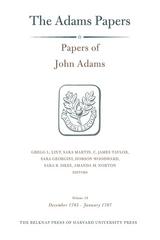
Volume 18 is the final volume of the Papers of John Adams wholly devoted to Adams’ diplomatic career. It chronicles fourteen months of his tenure as minister to Great Britain and his joint commission, with Thomas Jefferson, to negotiate treaties with Europe and North Africa. With respect to Britain, Adams found it impossible to do “any Thing Satisfactory, with this Nation,” and the volume ends with his decision to resign his posts. His diplomatic efforts, Adams thought, were too much akin to “making brick without straw.”
John Adams’ ministerial efforts in London were disappointing, but other aspects of his life were not. He and Jefferson failed to finalize treaties with Portugal and Great Britain, but they did, through agent Thomas Barclay, conclude a treaty with Morocco. Barclay’s letters are the earliest and most evocative American accounts of that region. Adams witnessed the marriage of his daughter, Abigail 2d, to William Stephens Smith, promoted the ordination of American Episcopal bishops, and toured the English countryside, first with Thomas Jefferson and then with his family. Most significant perhaps was the publication of the first volume of Adams’ Defence of the Constitutions of Government of the United States of America. This work is often attributed to concern over Shays’ Rebellion, of which Adams knew little when he began drafting. In fact, it was Adams’ summer 1786 visit to the Netherlands that provoked his work. There, Dutch Patriot friends, involved in their own revolution, expressed interest in seeing “upon paper” his remarks “respecting Government.”
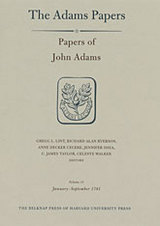
In mid-March 1781, John Adams received his commission and instructions as minister to the Netherlands and embarked on the boldest initiative of his diplomatic career. Disappointed by the lack of interest shown by Dutch investors in his efforts to raise a loan for the United States, Adams changed his tactics, and in a memorial made a forthright appeal to the States General of the Netherlands for immediate recognition of the United States. Published in Dutch, English, and French, it offered all of Europe a radical vision of the ordinary citizen’s role in determining political events. In this volume, for the first time, the circumstances and reasoning behind Adams’s bold moves in the spring of 1781 are presented in full.
In July the French court summoned Adams, the only American in Europe empowered to negotiate an Anglo–American peace, to Paris for consultations regarding an offer made by Austria and Russia to mediate the Anglo–French war. In his correspondence with France’s foreign minister, the Comte de Vergennes, Adams passionately insisted that the United States was fully and unambiguously independent and sovereign and must be recognized as such by Great Britain before any negotiations took place. This volume shows John Adams to be a determined and resourceful diplomat, unafraid to go beyond the bounds of traditional diplomacy to implement his vision of American foreign policy.
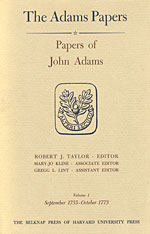
No family in three generations has contributed so much to American history as the Adamses. John Adams, John Quincy Adams, and Charles Francis Adams, despite periods of doubt, knew that history, if not their contemporaries, would recognize their accomplishments. When the Adams Papers series is complete, the writings of these three statesmen will have been examined thoroughly.
Aside from the Legal Papers of John Adams, published in 1965, these two volumes are the first in Series III: General Correspondence and Other Papers of the Adams Statesmen. Volumes 1 and 2 of the Papers of John Adams include letters to and from friends and colleagues, reports of committees on which he served, his polemical writings, published and unpublished, and state papers to which he made a contribution.
All of Adams’s newspaper writings, including “A Dissertation on the Canon and the Feudal Law,” are in these two volumes. In addition to being a condemnation of the Stamp Act, the “Dissertation” is shown to be one of the building blocks of the theory of a commonwealth of independent states under the king, which reaches complete statement in the Novanglus letters. For the first time, all thirteen of these letters appear in full with annotation.
The period September 1755 to April 1775 covers Adams’s public service in Braintree and Boston town meetings, the Massachusetts House of Representatives, the First Continental Congress, and the First Provincial Congress of Massachusetts. During this time his political future was being shaped by circumstances not always of his choosing. He hesitated at first at the threshold of a public career, political ambition in conflict with concern for his family’s well-being. But as the confrontation with Great Britain sharpened, the crisis became acute; no choice remained. For Adams there was no shirking the path of duty.
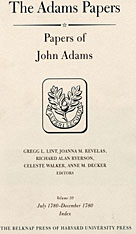
On the last day of December 1780, John Adams wrote that he had just spent “the most anxious and mortifying Year of my whole Life.” He had resided first at Paris, then at Amsterdam, attempting, without success, to open Anglo–American peace negotiations and to raise a Dutch loan. In volumes 9 and 10 of the Papers of John Adams, over 600 letters and documents that Adams sent to and received from numerous correspondents in Europe and America provide an unparalleled view of Adams’s diplomacy and a wealth of detail on the world in which he lived.
These volumes chronicle Adams’s efforts to convince the British people and their leaders that Britain’s economic survival demanded an immediate peace; his “snarling growling” debate with the French foreign minister, the Comte de Vergennes, over the proper Franco–American relationship; and his struggle to obtain a loan in the Netherlands, where policies were dictated by Mammon rather than republican virtue. Adams’s writings, diplomatic dispatches, and personal correspondence all make clear the scope of his intelligence gathering and his propaganda efforts in the British, French, and Dutch press. The letters reflect his interest in Bordeaux wines, the fate of Massachusetts Constitution that he had drafted in 1779, and political developments in Philadelphia, Boston, London, and St. Petersburg. The volumes leave no doubt as to John Adams’s unwavering commitment to the American cause. Even in this most difficult year, he believed the revolution in America to be “the greatest that ever took Place among Men.” He felt honored to serve a new nation where “the Wisdom and not the Man is attended to,” whose citizens were fighting a “People’s War” from which the United States would inevitably emerge victorious to take its rightful place on the world stage.
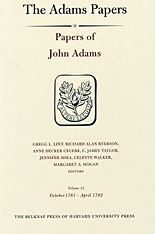
The American victory at Yorktown in October 1781 and the fall of Lord North’s ministry in March 1782 opened the possibility that John Adams might soon be involved in negotiations to end the war for American independence. To prepare for the occasion, Adams and Benjamin Franklin discussed in their letters the fundamentals for peace. Adams made it clear to the British government that there would be no negotiations without British recognition of the United States as independent and sovereign.
This volume chronicles Adams’s efforts, against great odds, to achieve formal recognition of the new United States. The documents include his vigorous response to criticism of his seemingly unorthodox methods by those who would have preferred that he pursue a different course, including Congress’s newly appointed secretary for foreign affairs, Robert R. Livingston.
In April 1782 the Netherlands recognized the United States and admitted John Adams as its minister. For Adams it was “the most Signal Epocha, in the History of a Century,” and he would forever see it as the foremost achievement of his diplomatic career. The volume ends with Adams, at long last a full-fledged member of the diplomatic corps, describing his reception by the States General and his audiences with the Prince and Princess of Orange.
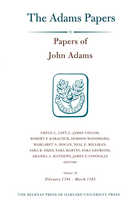
“Once more after an Interruption of ten Years, I pronounce myself a happy Man, and pray Heaven to continue me so.” Thus wrote John Adams in late August 1784 after the arrival in Europe of his wife Abigail and daughter Nabby. Adams and his family were living together in the pleasant Paris suburb of Auteuil. There Adams, with Benjamin Franklin and Thomas Jefferson, formed a joint commission to conclude commercial treaties with the nations of Europe and North Africa. For the first time since he had left America in 1778 on his first diplomatic mission, Adams was no longer engaged in “militia diplomacy.”
Volume 16 of the Papers of John Adams chronicles fourteen months of Adams’ diplomatic career. As minister to the Netherlands he raised a new Dutch loan to save America from financial ruin. As joint commissioner he negotiated a commercial treaty with Prussia, proposed similar treaties with other European nations, and prepared to negotiate with the Barbary states. The commissioners also sought to resolve Anglo-American differences left over from the peace negotiations and arising from the two nations’ burgeoning trade. Volume 16 thus forms a prelude to the next phase of John Adams’ diplomatic career, for his February 1785 appointment as minister to the Court of St. James meant that the management of Anglo-American relations would be his responsibility alone.



“Huzza for the new World and farewell to the Old One,” John Adams wrote in late 1787, wrapping up a decade’s worth of diplomatic service in Europe. Volume 19 of the Papers of John Adams chronicles Adams’s last duties in London and The Hague. In the twenty-eight months documented here, he petitioned the British ministry to halt impressment of American sailors, toured the English countryside, and observed parliamentary politics. Adams salvaged U.S. credit by contracting two new Dutch loans amid the political chaos triggered by William V’s resurgence. Correspondents like Thomas Jefferson and the Marquis de Lafayette mulled over the Anglo–American trade war that followed the Revolution and reported on the French Assembly of Notables—topics that Adams commented on with trademark candor. He wrote the final two volumes of his work, A Defence of the Constitutions of Government of the United States of America.
Adams yearned to return home and see the American republic take shape. “For a Man who has been thirty Years rolling like a stone,” Adams wrote, the choice was whether to “set down in private Life to his Plough; or push into turbulent scenes of Sedition and Tumult; whether be sent to Congress, or a Convention or God knows what.” Back on his native soil of Massachusetts in June 1788, Adams settled into rural retirement with wife Abigail and watched the U.S. Constitution’s ratification evolve. By volume’s end, John Adams again resumes public life, ready to serve as America’s first vice president.

"You may well Suppose that I was the Focus of all Eyes," John Adams wrote on 2 June 1785 of his first audience with George III, which formally inaugurated the post of American minister to Great Britain. Eager to restore "the old good Nature and the old good Humour" between the two nations, Adams spent the following months establishing the U.S. legation at No. 8 Grosvenor Square. For Adams, it was a period of multiple responsibilities and mixed success. He remained minister to the Netherlands and one of the joint commissioners charged with negotiating commercial treaties with the nations of Europe and North Africa--sensitive duties that occasionally called for Adams to encode his correspondence with the aid of his new secretary and future son-in-law, Col. William Stephens Smith.
Rebuffed by the British ministry in his mission to enforce the peace treaty of 1783 and renew Anglo-American commerce, Adams identified and achieved other goals. He preserved American credit despite the bankruptcy of a Dutch banking house that handled U.S. loans, petitioned for the release of impressed sailors, marked the ratification of the Prussian-American treaty, championed the needs of the American Episcopal Church, and laid the groundwork for negotiations with the Barbary States. His attention was not confined solely to foreign affairs. John Adams's letters from London, laced with his trademark candor, demonstrate his ripening Federalist view of the new American government's vulnerability and promise.

On September 3, 1783, John Adams, Benjamin Franklin, and John Jay signed the definitive Anglo-American peace treaty. Adams and his colleagues strived to establish a viable relationship between the new nation and its largest trading partner but were stymied by rising British anti-Americanism.
Adams’ diplomatic efforts were also complicated by domestic turmoil. Americans, in a rehearsal for the later Federalist-Antifederalist conflict over the United States Constitution, were debating the proper relationship between the central government and the states. Adams, a Federalist as early as 1783, argued persuasively for a government that honored its treaties and paid its foreign debts. But when bills far exceeding the funds available for their redemption were sent to Europe, he was forced to undertake a dangerous winter journey to the Netherlands to raise a new loan and save the United States from financial disaster.
None of the founding fathers equals the candor of John Adams’ observations of his eighteenth-century world. His letters, always interesting, reveal with absolute clarity Adams’ positions on the personalities and issues of his times.

John Adams reached Paris on October 26, 1782, for the final act of the American Revolution: the peace treaty. This volume chronicles his role in the negotiations and the decision to conclude a peace separate from France. Determined that the United States pursue an independent foreign policy, Adams's letters criticized Congress's naive confidence in France. But in April 1783, frustrated at delays over the final treaty and at real and imagined slights from Congress and Benjamin Franklin, Adams believed the crux of the problem was Franklin's moral bankruptcy and servile Francophilia in the service of a duplicitous Comte de Vergennes.
Volume 14 covers more than just the peace negotiations. As American minister to the Netherlands, Adams managed the distribution of funds from the Dutch-American loan. Always an astute observer, he commented on the fall of the Shelburne ministry and its replacement by the Fox-North coalition, the future of the Anglo-American relationship, and the prospects for the United States in the post-revolutionary world. But he was also an anxious father, craving news of John Quincy Adams's slow journey from St. Petersburg to The Hague. By May 1783, Adams was tired of Europe, but resigned to remaining until his work was done.

A new chapter in John Adams's diplomatic career opened when the Dutch recognized the United States in April 1782. Operating from the recently purchased American legation at The Hague, Adams focused his energies on raising a much needed loan from Dutch bankers and negotiating a Dutch-American commercial treaty. This volume chronicles Adams's efforts to achieve these objectives, but it also provides an unparalleled view of eighteenth-century American diplomacy on the eve of a peace settlement ending the eight-year war of the American Revolution.
John Adams was a shrewd observer of the political and diplomatic world in which he functioned and his comments on events and personalities remain the most candid and revealing of any American in Europe. His correspondence traces the complex negotiations necessary to raise a Dutch loan and throws new light on his conclusion of a treaty of amity and commerce with the Netherlands, achievements of which he was most proud. Events in England and elsewhere in Europe also provided grist for his pen. Would the establishment in July of a new ministry under the earl of Shelburne hinder or advance the cause of peace? That question bedeviled Adams and his correspondents for the fate of the new nation literally rode on its answer. The volume ends with Adams's triumphal departure from The Hague to face new challenges at Paris as one of the American commissioners to negotiate an Anglo-American peace treaty.

These volumes provide an unparalleled account of the conduct of American diplomacy in the early years of the republic, while the war with Britain continued and after the treaty of alliance with France was signed. John Adams served for ten months as a commissioner to France. Though he was the newest member of the three-man commission, he was its chief administrator, handling most of its correspondence, and his papers are the first full documentary record of the commission ever published. They provide a wealth of detail on every aspect of diplomacy, from negotiations with ministers of state to the arranging of prisoner exchanges.
The documents throw new light on Adams’s relations with his fellow commissioners, Benjamin Franklin and Arthur Lee. Historians have depicted Adams as hostile to Franklin and supportive of Lee, but the record shows that he found himself increasingly in disagreement with Lee, while working harmoniously with Franklin from the outset. Moreover, after the commission was disbanded in February 1779 and Franklin was appointed Minister to France—a move Adams had advocated—he undertook an important mission at Franklin’s behest. It is now clear that the rift that developed between the two statesmen did not begin until after Adams’s return to Paris in 1780.
Legal and constitutional scholars will find Volume 8 of particular interest. The Massachusetts Constitution of 1780, drafted by John Adams in 1779, served as a crucial source for the Constitution of the United States; today it is the oldest written constitution in the world still in effect. The earliest surviving version of Adams’s text, the Report of a Constitution for the Commonwealth of Massachusetts, is here published with full annotation for the first time. It is John Adams’s most enduring constitutional work.

These volumes document John Adams’s thinking and actions during the final years of his congressional service and take him through his first five months as a Commissioner in France in association with Benjamin Franklin and Arthur Lee.
While Adams was still in Philadelphia, military matters continued to he his major concern. Most demanding was his presidency of the Board of War, which took up his “whole Time, every Morning and Evening.” In general, though, the documents and reports of his conduct reveal a commitment to a national outlook. Congress should be a national legislature, and personal, state, and regional rivalries should give way to concern for the greater good—these were his deeply held convictions.
When chosen a Commissioner to France, Adams was reluctant to go. But duty and the honor of the position, along with the encouragement of an understanding and self-sacrificing wife, persuaded him to accept. With son John Quincy for a companion, he crossed the Atlantic to a new career. His initiation into the complexities of diplomacy brought a growing awareness of European affairs and the problems facing the new nation in the diplomatic arena. Letters deal with such varied topics as the supervision of American commercial agents in French ports, regulation of privateers, settlement of disputes between crews and officers, negotiation of loans, and help for American prisoners in England. Personal letters run the gamut from Adams’s views on the proper conduct of American diplomacy to strangers’ pleas for aid in locating relatives in America. Contrary to the usual impression of Adams as little more than a clerk for the Commission, evidence shows that he was its chief administrator.
Acclimation to living abroad among diplomats did not stifle Adams’s yearning for the simplicities of private life in the midst of his family. Yet as the important and interesting documents of this volume show, the groundwork was being laid for his even more significant role in diplomacy.

As the American colonies grew more restive, and a break with the mother country ceased to be unthinkable, John Adams was forced to spend less and less time with his beloved family. Although burdened by ever-expanding responsibilities in the Second Continental Congress, he found time for an amazing amount of correspondence. The majority of his letters were written to secure the facts that would enable this duty-ridden man to decide and act effectively on the issues being debated. Military affairs, a source of never-ending concern, provide some of the most fascinating subjects, including several accounts of the Battle of Bunker Hill, assessments of various high-ranking officers, and complaints about the behavior of the riflemen sent from three states southward to aid the Massachusetts troops.
The heated question of pay for soldiers and officers strained relations between New England and southern colonies early. By refusing to confront the issue of slavery when it was raised by several correspondents, Adams sought to avoid exacerbating regional sensitivities further. When the question of independent governments for former colonies arose, at the request of several colleagues Adams sketched a model, Thoughts on Government, three versions of which are included here.
His optimistic republicanism, however, was balanced by fear that a “Spirit of Commerce” would undermine the virtue requisite for republican institutions. Adams' important committee work included his draft in 1775 of rules for regulation of the Continental Navy, which have remained the basis for the governance of the United States Navy down into our own time, and his plan of treaties, which would guide American diplomats up to World War II. Both were derivative, but he skillfully adapted his materials to American needs and circumstances. These volumes reflect the spirit of those tumultuous years when the leaders emerging in America confronted each other, and exciting new ideas, as they tried to resolve the issues of a revolutionary period.

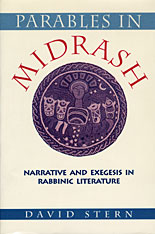

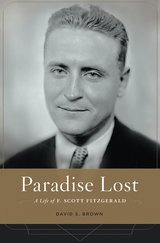
Pigeonholed in popular memory as a Jazz Age epicurean, a playboy, and an emblem of the Lost Generation, F. Scott Fitzgerald was at heart a moralist struck by the nation’s shifting mood and manners after World War I. In Paradise Lost, David Brown contends that Fitzgerald’s deepest allegiances were to a fading antebellum world he associated with his father’s Chesapeake Bay roots. Yet as a midwesterner, an Irish Catholic, and a perpetually in-debt author, he felt like an outsider in the haute bourgeoisie haunts of Lake Forest, Princeton, and Hollywood—places that left an indelible mark on his worldview.
In this comprehensive biography, Brown reexamines Fitzgerald’s childhood, first loves, and difficult marriage to Zelda Sayre. He looks at Fitzgerald’s friendship with Hemingway, the golden years that culminated with Gatsby, and his increasing alcohol abuse and declining fortunes which coincided with Zelda’s institutionalization and the nation’s economic collapse.
Placing Fitzgerald in the company of Progressive intellectuals such as Charles Beard, Randolph Bourne, and Thorstein Veblen, Brown reveals Fitzgerald as a writer with an encompassing historical imagination not suggested by his reputation as “the chronicler of the Jazz Age.” His best novels, stories, and essays take the measure of both the immediate moment and the more distant rhythms of capital accumulation, immigration, and sexual politics that were moving America further away from its Protestant agrarian moorings. Fitzgerald wrote powerfully about change in America, Brown shows, because he saw it as the dominant theme in his own family history and life.

The question of truth has never been more urgent than today, when the distortion of facts and the imposition of pseudo-realities in the service of the powerful have become the order of the day. In The Paradox of Being Poul Andersen addresses the concept of truth in Chinese Daoist philosophy and ritual. His approach is unapologetically universalist, and the book may be read as a call for a new way of studying Chinese culture, one that does not shy away from approaching “the other” in terms of an engagement with “our own” philosophical heritage.
The basic Chinese word for truth is zhen, which means both true and real, and it bypasses the separation of the two ideas insisted on in much of the Western philosophical tradition. Through wide-ranging research into Daoist ritual, both in history and as it survives in the present day, Andersen shows that the concept of true reality that informs this tradition posits being as a paradox anchored in the inexistent Way (Dao). The preferred way of life suggested by this insight consists in seeking to be an exception to ordinary norms and rules of behavior which nonetheless engages what is common to us all.

China’s bold program of reforms launched in the late 1970s—the move to a market economy and the opening to the outside world—ended the political chaos and economic stagnation of the Cultural Revolution and sparked China’s unprecedented economic boom. Yet, while the reforms made possible a rising standard of living for the majority of China’s population, they came at the cost of a weakening central government, increasing inequalities, and fragmenting society.
The essays of Barry Naughton, Joseph Fewsmith, Paul H. B. Godwin, Murray Scot Tanner, Lianjiang Li and Kevin J. O’Brien, Tianjian Shi, Martin King Whyte, Thomas P. Bernstein, Dorothy J. Solinger, David S. G. Goodman, Kristen Parris, Merle Goldman, Elizabeth J. Perry, and Richard Baum and Alexei Shevchenko analyze the contradictory impact of China’s economic reforms on its political system and social structure. They explore the changing patterns of the relationship between state and society that may have more profound significance for China than all the revolutionary movements that have convulsed it through most of the twentieth century.

A central current in the history of democratic politics is the tensions between the political culture of an informed citizenry and the potentially antidemocratic impulses of the larger mass of individuals who are only marginally involved in the political world. Given the public’s low level of political interest and knowledge, it is paradoxical that the democratic system works at all.
In The Paradox of Mass Politics W. Russell Neuman analyzes the major election surveys in the United States for the period 1948–1980 and develops for each a central index of political sophistication based on measures of political interest, knowledge, and style of political conceptualization. Taking a fresh look at the dramatic findings of public apathy and ignorance, he probes the process by which citizens acquire political knowledge and the impact of their knowledge on voting behavior.
The book challenges the commonly held view that politically oriented college-educated individuals have a sophisticated grasp of the fundamental political issues of the day and do not rely heavily on vague political symbolism and party identification in their electoral calculus. In their expression of political opinions and in the stability and coherence of those opinions over time, the more knowledgeable half of the population, Neuman concludes, is almost indistinguishable from the other half. This is, in effect, a second paradox closely related to the first.
In an attempt to resolve a major and persisting paradox of political theory, Neuman develops a model of three publics, which more accurately portrays the distribution of political knowledge and behavior in the mass population. He identifies a stratum of apoliticals, a large middle mass, and a politically sophisticated elite. The elite is so small (less than 5 percent) that the beliefs and behavior of its member are lost in the large random samples of national election surveys, but so active and articulate that its views are often equated with public opinion at large by the powers in Washington. The key to the paradox of mass politics is the activity of this tiny stratum of persons who follow political issues with care and expertise. This book is essential reading for concerned students of American politics, sociology, public opinion, and mass communication.

"The distinguishing thing about the paranoid style is not that its exponents see conspiracies or plots here and there in history, but that they regard a 'vast' or 'gigantic' conspiracy as the motive force in historical events...The paranoid spokesman sees the fate of this conspiracy in apocalyptic terms--he traffics in the birth and death of whole worlds, whole political orders, whole systems of human values. He is always manning the barricades of civilization."
--From the book

What parent hasn’t wondered “What do I do now?” as a baby cries or a teenager glares? Making babies may come naturally, but knowing how to raise them doesn’t. As primatologist-turned-psychologist Harriet J. Smith shows in this lively safari through the world of primates, parenting by primates isn’t instinctive, and that’s just as true for monkeys and apes as it is for humans.
In this natural history of primate parenting, Smith compares parenting by nonhuman and human primates. In a narrative rich with vivid anecdotes derived from interviews with primatologists, from her own experience breeding cotton-top tamarin monkeys for over thirty years, and from her clinical psychology practice, Smith describes the thousand and one ways that primate mothers, fathers, grandparents, siblings, and even babysitters care for their offspring, from infancy through young adulthood.
Smith learned the hard way that hand-raised cotton-top tamarins often mature into incompetent parents. Her observation of inadequate parenting by cotton-tops plus her clinical work with troubled human families sparked her interest in the process of how primates become “good-enough” parents. The story of how she trained her tamarins to become adequate parents lays the foundation for discussions about the crucial role of early experience on parenting in primates, and how certain types of experiences, such as anxiety and social isolation, can trigger neglectful or abusive parenting.
Smith reveals diverse strategies for parenting by primates, but she also identifies parenting behaviors crucial to the survival and development of primate youngsters that have stood the test of time.

Paris at War chronicles the lives of ordinary Parisians during World War II, from September 1939 when France went to war with Nazi Germany to liberation in August 1944. Readers will relive the fearful exodus from the city as the German army neared the capital, the relief and disgust felt when the armistice was signed, and the hardships and deprivations under Occupation. David Drake contrasts the plight of working-class Parisians with the comparative comfort of the rich, exposes the activities of collaborationists, and traces the growth of the Resistance from producing leaflets to gunning down German soldiers. He details the intrigues and brutality of the occupying forces, and life in the notorious transit camp at nearby Drancy, along with three other less well known Jewish work camps within the city.
The book gains its vitality from the diaries and reminiscences of people who endured these tumultuous years. Drake’s cast of characters comes from all walks of life and represents a diversity of political views and social attitudes. We hear from a retired schoolteacher, a celebrated economist, a Catholic teenager who wears a yellow star in solidarity with Parisian Jews, as well as Resistance fighters, collaborators, and many other witnesses.
Drake enriches his account with details from police records, newspapers, radio broadcasts, and newsreels. From his chronology emerge the broad rhythms and shifting moods of the city. Above all, he explores the contingent lives of the people of Paris, who, unlike us, could not know how the story would end.
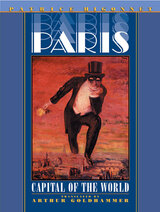
In an original and evocative journey through modern Paris from the mid-eighteenth century to World War II, Patrice Higonnet offers a delightful cultural portrait of a multifaceted, continually changing city. In examining the myths and countermyths of Paris that have been created and re-created over time, Higonnet reveals a magical urban alchemy in which each era absorbs the myths and perceptions of Paris past, adapts them to the cultural imperatives of its own time, and feeds them back into the city, creating a new environment.
Paris was central to the modern world in ways internal and external, genuine and imagined, progressive and decadent. Higonnet explores Paris as the capital of revolution, science, empire, literature, and art, describing such incarnations as Belle Epoque Paris, the Commune, the surrealists' city, and Paris as viewed through American eyes. He also evokes the more visceral Paris of alienation, crime, material excess, and sensual pleasure.
Insightful, informative, and gracefully written, Paris illuminates the intersection of collective and individual imaginations in a perpetually shifting urban dynamic. In describing his Paris of the real and of the imagination, Higonnet sheds brilliant new light on this endlessly intriguing city.
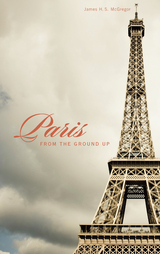
Paris is the most personal of cities. There is a Paris for the medievalist, and another for the modernist—a Paris for expatriates, philosophers, artists, romantics, and revolutionaries of every stripe. James H. S. McGregor brings these multiple perspectives into focus throughout this concise, unique history of the City of Light.
His panorama begins with an ancient Gallic fortress on the Seine, burned to the ground by its own defenders in a vain effort to starve out Caesar’s legions. After ninth-century raids by the Vikings ended, Parisians expanded the walls of their tiny sanctuary on the Ile de la Cité, turning the river’s right bank into a thriving commercial district and the Rive Gauche into a college town. Gothic spires expressed a taste for architectural novelty, matched only by the palaces and pleasure gardens of successive monarchs whose ingenuity made Paris the epitome of everything French. The fires of Revolution threatened all that had come before, but Baron Haussmann saw opportunity in the wreckage. No planned city in the world is more famous than his.
Paris from the Ground Up allows readers to trace the city’s evolution in its architecture and art—from the Roman arena to the Musée d’Orsay, from the Louvre’s defensive foundations to I. M. Pei’s transparent pyramids. Color maps, along with identifying illustrations, make the city accessible to visitors by foot, Metro, or riverboat.
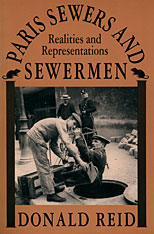
The expansion of the Paris sewer system during the Second Empire and Third Republic was both a technological and political triumph. The sewers themselves were an important cultural phenomenon, and the men who worked in them a source of fascination. Donald Reid shows that observing how such laborers as cesspool cleaners and sewermen present themselves and are represented by others is a way to reflect on the material and cultural foundations of everyday life.
For bourgeois urbanites, the sewer became the repository of latent anxieties about disease, disorder, and anarchy. The sewermen themselves formed a model army of labor in an era of social upheaval in the workplace. They were pioneers both in demanding the right of public servants to unionize and in securing social welfare measures. They were among the first French manual laborers to win the eight-hour day, paid vacations, and other benefits.
Reid transcends traditional categories by bringing together the infrastructure and the cultural supports of society, viewing technocracy and its achievements in technical, political and cultural terms. Historians of modern France, and Francophiles in search of the unusual, will welcome the cultural interfaces of urban history, labor history, and the history of technology his book provides. His text is enlivened by drawings and photographs of the life below Paris streets, and illuminated by references to literary sources such as Hugo's Les Miserables and Giraudoux's The Madwoman of Chaillot.
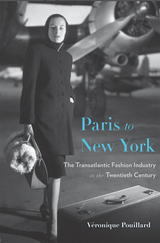
An innovative history of the fashion industry, focusing on the connections between Paris and New York, art and finance, and design and manufacturing.
Fashion is one of the most dynamic industries in the world, with an annual retail value of $3 trillion and globally recognized icons like Coco Chanel, Christian Dior, and Yves Saint Laurent. How did this industry generate such economic and symbolic capital?
Focusing on the roles of entrepreneurs, designers, and institutions in fashion’s two most important twentieth-century centers, Paris to New York tells the history of the industry as a negotiation between art and commerce. In the late nineteenth century, Paris-based firms set the tone for a global fashion culture nurtured by artistic visionaries. In the burgeoning New York industry, however, the focus was on mass production. American buyers, trend scouts, and designers crossed the Atlantic to attend couture openings, where they were inspired by, and often accused of counterfeiting, designs made in Paris. For their part, Paris couturiers traveled to New York to understand what American consumers wanted and to make deals with local manufacturers for whom they designed exclusive garments and accessories. The cooperation and competition between the two continents transformed the fashion industry in the early and mid-twentieth century, producing a hybrid of art and commodity.
Véronique Pouillard shows how the Paris–New York connection gave way in the 1960s to a network of widely distributed design and manufacturing centers. Since then, fashion has diversified. Tastes are no longer set by elites alone, but come from the street and from countercultures, and the business of fashion has transformed into a global enterprise.
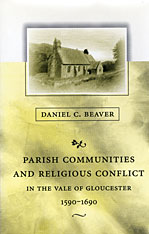
Many historians have attempted to understand the violent religious conflicts of the seventeenth century from viewpoints dominated by concepts of class, gender, and demography. But few studies have explored the cultural process whereby religious symbolism created social cohesion and political allegiance. This book examines religious conflict in the parish communities of early modern England using an interdisciplinary approach that includes all these perspectives.
Daniel Beaver studies the urban parish of Tewkesbury and six rural parishes in its hinterland over a period of one hundred years, drawing on local ecclesiastical court records, sermons, parish records, corporate minutes and charity books, and probate documents. He discusses the centrality of religious symbols and ceremonies in the ordering of local societies, particularly in local conceptions of place, personal identity, and the life cycle. Four phases in the transformation of parish communities emerge and are examined in this book.
This exploration of the interrelationship of religion, politics, and society, and the transformation of local communities in civil war, has a value beyond the particular history of early modern England, contributing to a broader understanding of religious revivals, fundamentalisms, and the persistent link between religion, nationalism, and ethnic identity in the modern world.

Did barristers as a professional group support the French Revolution, or were they most often “in flight from politics”? A close inquiry into the Order of Barristers at Paris—the largest and most important in France, with over six hundred members in 1789—reveals that the vast majority within the Order did not support the Revolution. Unsympathetic to the ideal of the nation asserted by the National Assembly, most members of the Order instead remained loyal to the traditional corporate paradigm that the National Assembly had specifically repudiated. Dismayed by the abolition of their Order, they were disillusioned with the Revolution even before the advent of the Terror, which, along with the arbitrariness of the Directory, deepened their disaffection. The manner in which Bonaparte ultimately restored the Order in 1811 completed their alienation from the Revolution and, as a result, they warmly welcomed the return of the Bourbons in 1814.
This investigation not only revises what historians have long thought of the attitude of barristers toward the French Revolution, but also offers insights into the corporate character of Old Regime society and how the Revolution affected it. Fitzsimmons’s study suggests that many propertied commoners during the Revolution were not politically engaged, that they were not necessarily associated with a party or cause simply because of their place within a set of social relationships. Most of the barristers to the Parlement simply reacted timidly to events and yearned for an ideal that was irretrievably lost, tending to view the Revolution more in terms of an end than of a beginning.
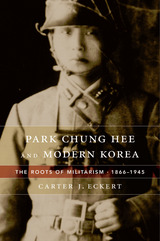
For South Koreans, the twenty years from the early 1960s to late 1970s were the best and worst of times—a period of unprecedented economic growth and of political oppression that deepened as prosperity spread. In this masterly account, Carter J. Eckert finds the roots of South Korea’s dramatic socioeconomic transformation in the country’s long history of militarization—a history personified in South Korea’s paramount leader, Park Chung Hee.
The first volume of a comprehensive two-part history, Park Chung Hee and Modern Korea: The Roots of Militarism, 1866–1945 reveals how the foundations of the dynamic but strongly authoritarian Korean state that emerged under Park were laid during the period of Japanese occupation. As a cadet in the Manchurian Military Academy, Park and his fellow officers absorbed the Imperial Japanese Army’s ethos of victory at all costs and absolute obedience to authority. Japanese military culture decisively shaped Korea’s postwar generation of military leaders. When Park seized power in an army coup in 1961, he brought this training and mentality to bear on the project of Korean modernization.
Korean society under Park exuded a distinctively martial character, Eckert shows. Its hallmarks included the belief that the army should intervene in politics in times of crisis; that a central authority should plan and monitor the country’s economic system; that the Korean people’s “can do” spirit would allow them to overcome any challenge; and that the state should maintain a strong disciplinary presence in society, reserving the right to use violence to maintain order.
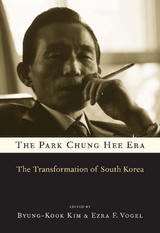
In 1961 South Korea was mired in poverty. By 1979 it had a powerful industrial economy and a vibrant civil society in the making, which would lead to a democratic breakthrough eight years later. The transformation took place during the years of Park Chung Hee's presidency. Park seized power in a coup in 1961 and ruled as a virtual dictator until his assassination in October 1979. He is credited with modernizing South Korea, but at a huge political and social cost.
South Korea's political landscape under Park defies easy categorization. The state was predatory yet technocratic, reform-minded yet quick to crack down on dissidents in the name of political order. The nation was balanced uneasily between opposition forces calling for democratic reforms and the Park government's obsession with economic growth. The chaebol (a powerful conglomerate of multinationals based in South Korea) received massive government support to pioneer new growth industries, even as a nationwide campaign of economic shock therapy-interest hikes, devaluation, and wage cuts-met strong public resistance and caused considerable hardship.
This landmark volume examines South Korea's era of development as a study in the complex politics of modernization. Drawing on an extraordinary range of sources in both English and Korean, these essays recover and contextualize many of the ambiguities in South Korea's trajectory from poverty to a sustainable high rate of economic growth.

Parkinson’s disease is a movement disorder characterized by tremor, stiffness, and slow gait. It affects 500,000 people in the United States, with approximately 50,000 new cases diagnosed annually. But its impact is much wider. Family members with little understanding of the disease often find themselves struggling to help their loved one navigate the complexities of the health care system. Patients wonder, Which treatments are best for me? Will I be able to live on my own? Should I join a drug trial?
In this straightforward, compassionate guide, Nutan Sharma and Elaine Richman address these concerns and more. They provide a thorough review of the etiology, diagnosis, and current treatment of Parkinson’s, with special consideration given to the effect on family dynamics and routines—including the often neglected topics of long-term care and sexual function. The authors also review the pros and cons of various alternative therapies, including nutritional supplements, massage therapy, and traditional Chinese medicine.

In 1624 James I invited Parliament to discuss issues of war and peace, setting a precedent which would make yet another inroad into the ancient prerogatives of the crown. The so-called “Happy Parliament” dismayed the peace-loving King by supporting Prince Charles and the Duke of Buckingham in their demands for war with Spain.
Robert Ruigh presents an absorbing and authoritative analytic narrative of the proceedings between Parliament and the crown and their far-reaching constitutional and political consequences. His use of fifteen parliamentary diaries and other contemporary manuscripts has resulted in a balanced account which avoids the tendency to vilify the Stuarts and glorify the Commons, and which provides an integrated and perceptive picture of the Parliament. He presents an analysis of patronage in relation to the composition of the Commons and a reevaluation of historical generalizations about the senility and ineffectuality of King James during his declining years, the seizure of power by the Duke and the Prince and their management of Parliament, the precedent of free speech in foreign affairs, and the effect of Parliament on contemporary politics.
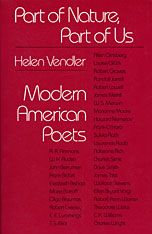
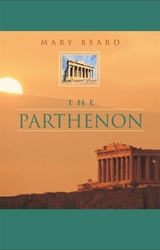
Read the Bldg Blog interview with Mary Beard about the Wonders of the World series(Part I and Part II)
Oscar Wilde compared it to a white goddess, Evelyn Waugh to Stilton cheese. In observers from Lord Byron to Sigmund Freud to Virginia Woolf it met with astonishment, rapture, poetry, even tears--and, always, recognition. Twenty-five hundred years after it first rose above Athens, the Parthenon remains one of the wonders of the world, its beginnings and strange turns of fortune over millennia a perpetual source of curiosity, controversy, and intrigue.
At once an entrancing cultural history and a congenial guide for tourists, armchair travelers, and amateur archaeologists alike, this book conducts readers through the storied past and towering presence of the most famous building in the world. Who built the Parthenon, and for what purpose? How are we to understand its sculpture? Why is it such a compelling monument? The classicist and historian Mary Beard takes us back to the fifth century B.C. to consider the Parthenon in its original guise--as the flagship temple of imperial Athens, housing an enormous gold and ivory statue of the city's patron goddess attended by an enigmatic assembly of sculptures. Just as fascinating is the monument's far longer life as cathedral church of Our Lady of Athens, as "the finest mosque in the world," and, finally, as an inspirational ruin and icon. Beard also takes a cool look at the bitter arguments that continue to surround the "Elgin Marbles," the sculptures from the Parthenon now in the British Museum. Her book constitutes the ultimate tour of the marvelous history and present state of this glory of the Acropolis, and of the world.
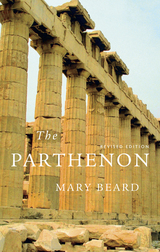
“Wry and imaginative, this gem of a book deconstructs the most famous building in Western history.”
—Benjamin Schwarz, The Atlantic
“In her brief but compendious volume [Beard] says that the more we find out about this mysterious structure, the less we know. Her book is especially valuable because it is up to date on the restoration the Parthenon has been undergoing since 1986.”
—Gary Wills, New York Review of Books
At once an entrancing cultural history and a congenial guide for tourists, armchair travelers, and amateur archaeologists alike, this book conducts readers through the storied past and towering presence of the most famous building in the world. In the revised version of her classic study, Mary Beard now includes the story of the long-awaited new museum opened in 2009 to display the sculptures from the building that still remain in Greece, as well as the controversies that have surrounded it, and asks whether it makes a difference to the “Elgin Marble debate.”

The Parthenon sculptures in the British Museum are unrivaled examples of classical Greek art, an inspiration to artists and writers since their creation in the fifth century bce. A superb visual introduction to these wonders of antiquity, this book offers a photographic tour of the most famous of the surviving sculptures from ancient Greece, viewed within their cultural and art-historical context.
Ian Jenkins offers an account of the history of the Parthenon and its architectural refinements. He introduces the sculptures as architecture--pediments, metopes, Ionic frieze--and provides an overview of their subject matter and possible meaning for the people of ancient Athens. Accompanying photographs focus on the pediment sculptures that filled the triangular gables at each end of the temple; the metopes that crowned the architrave surmounting the outer columns; and the frieze that ran around the four sides of the building, inside the colonnade. Comparative images, showing the sculptures in full and fine detail, bring out particular features of design and help to contrast Greek ideas with those of other cultures.
The book further reflects on how, over 2,500 years, the cultural identity of the Parthenon sculptures has changed. In particular, Jenkins expands on the irony of our intimate knowledge and appreciation of the sculptures--a relationship far more intense than that experienced by their ancient, intended spectators--as they have been transformed from architectural ornaments into objects of art.
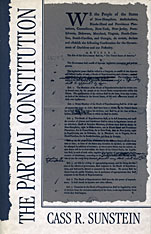
American constitutional law is at a crossroads. In a major new interpretation of the Constitution, Cass Sunstein offers a clear account of our present dilemmas and shows where we might go from here.
As it is currently interpreted, the Constitution is partial, Sunstein asserts. It is, first of all, biased. Contemporary constitutional law treats the status quo as neutral and just, and any departure as necessarily partisan. But when the status quo is neither neutral nor just, Sunstein argues, reasoning of this sort produces injustice. The Constitution is also partial in another sense: its meaning has come to be identified solely with the decisions of the Supreme Court. This was not always the case, as Sunstein demonstrates; nor was it the intention of the country's founders. Instead, the Constitution often served as a catalyst for public deliberation about its general terms and aspirations--and Sunstein makes a strong case for reviving this broader understanding of the Constitution's role.
In light of this analysis, Sunstein proposes solutions to some of the most hotly disputed issues of our time, including affirmative action, sex discrimination, pornography, "hate speech," and government funding of religious schools and the arts. In an especially striking argument, he claims that theequal protection clause of the Fourteenth Amendment--not the right to privacy--protects a woman's right to choose abortion. Sunstein connects these and other debates to the Constitution's historic commitment to public deliberation among political equalsand in doing so, he reconceives many of our most basic constitutional rights, such as free speech and equality under law. He urges that public deliberation about the meaning of the Constitution in turn be freed from a principle of neutrality based on the status quo. His work points to a historically sound but fundamentally new understanding of the American constitutional process as an exercise in deliberative democracy.

The study of ancient Greek particles has been an integral part of the study of the Greek language from its earliest beginnings. Among the first parts of speech to be distinguished in Greek scholarship were the σύνδεσμοι (“combiners”), which include the later category of particles. In the Renaissance, Matthaeus Devarius—a Greek scholar working in Rome—published a monograph on particles only sixteen years after Estienne’s Thesaurus Linguae Graecae, and in the nineteenth century many great German philologists devoted considerable attention to particles and their forms, functions, and meanings. In the second half of the twentieth century Greek particles have returned to scholarly attention, partly as a result of the developments in contemporary linguistics.
The Emmy-Noether project “The Pragmatic Functions and Meanings of Ancient Greek Particles,” carried out in the Classics Department of the University of Heidelberg from 2010 to 2014, set out to trace more than two millennia of research on Greek particles, and to take stock of current work on particles, both within and beyond ancient Greek. Building on the foundations of this scholarship, Particles in Ancient Greek Discourse undertakes an analysis of particle use across five genres of ancient Greek discourse: epic, lyric, tragedy, comedy, and historiography.

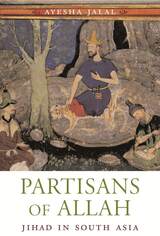
The idea of jihad is central to Islamic faith and ethics, and yet its meanings have been highly contested over time. They have ranged from the philosophical struggle to live an ethical life to the political injunction to wage war against enemies of Islam. Today, more than ever, jihad signifies the political opposition between Islam and the West. As the line drawn between Muslims and non-Muslims becomes more rigid, Ayesha Jalal seeks to retrieve the ethical meanings of this core Islamic principle in South Asian history.
Drawing on historical, legal, and literary sources, Jalal traces the intellectual itinerary of jihad through several centuries and across the territory connecting the Middle East with South Asia. She reveals how key innovations in modern Islamic thought resulted from historical imperatives. The social and political scene in India before, during, and after British colonial rule forms the main backdrop. We experience the jihad as armed warfare waged by Sayyid Ahmad of Rai Bareilly between 1826 and 1831, the calls to jihad in the great rebellion of 1857, the fusion of jihad with a strand of anti-colonial nationalism in the early twentieth century, and the contemporary politics of self-styled jihadis in Pakistan, waging war to liberate co-religionists in Afghanistan and Kashmir.
Partisans of Allah surveys this rich and tumultuous history of South Asian Muslims and its critical contribution to the intellectual development of the key concept of jihad. Analyzing the complex interplay of ethics and politics in Muslim history, the author effectively demonstrates the preeminent role of jihad in the Muslim faith today.

,The scientific correspondence of Watt, Black, Robison and others, together with James Watt's notebook of experiments on heat, edited by Eric Robinson and Douglas McKie.,
, The close friendship that grew up between Dr. Joseph Black, the,discoverer of specific and latent heats, and James Watt, the scientific instrument maker who was destined to become perhaps the greatest engineer of all time, is in,itself a dramatic relationship, not before fully appreciated, Here for the first time is the full text of all their surviving correspondence, known only fragmentarily before in J. P. Muirhead's Life and Mechanical Inventions of James Watt, and there rather freely amended by the editor.,
The amazing range of Watt's interests--in the firing of delft and stoneware, the manufacture of alkali from salt, the invention of scientific instruments as well as the copying press, and many other matters beside the steam-engine--is revealed here. Watt's own position as a scientist and the quality of his association with Black in further experiments on latent heat are fully documented. But the,correspondence is also valuable for the light it sheds on many aspects of life in Britain in the later half of the eighteenth century.
In addition, Watt's notebook on his experiments on heat, known before only through quotation, is presented complete. This is a primary source of first-rate importance to the historian of science.

Inductive zoology.
Aristotle, great Greek philosopher, researcher, reasoner, and writer, born at Stagirus in 384 BC, was the son of a physician. He studied under Plato at Athens and taught there (367–347); subsequently he spent three years at the court of a former pupil in Asia Minor. After some time at Mitylene, in 343–342 he was appointed by King Philip of Macedon to be tutor of his teen-aged son Alexander. After Philip’s death in 336, Aristotle became head of his own school (of “Peripatetics”), the Lyceum at Athens. Because of anti-Macedonian feeling there after Alexander’s death in 323, he withdrew to Chalcis in Euboea, where he died in 322.
Nearly all the works Aristotle prepared for publication are lost; the priceless ones extant are lecture-materials, notes, and memoranda (some are spurious). They can be categorized as follows:
I Practical: Nicomachean Ethics; Great Ethics (Magna Moralia); Eudemian Ethics; Politics; Economics (on the good of the family); On Virtues and Vices.
II Logical: Categories; Analytics (Prior and Posterior); Interpretation; Refutations used by Sophists; Topica.
III Physical: Twenty-six works (some suspect) including astronomy, generation and destruction, the senses, memory, sleep, dreams, life, facts about animals, etc.
IV Metaphysics: on being as being.
V Art: Rhetoric and Poetics.
VI Other works including the Constitution of Athens; more works also of doubtful authorship.
VII Fragments of various works such as dialogues on philosophy and literature; and of treatises on rhetoric, politics, and metaphysics.
The Loeb Classical Library edition of Aristotle is in twenty-three volumes.


Are American political parties on the way out? Political action committees (PACs) currently compete with parties for influence over candidates and voters; persuading a more independent and volatile electorate requires new tactics; technological innovations afford more sophisticated means to appeal for support. Many political observers express doubts about the ability of political parties to adapt to these changes and to survive, but Paul Herrnson instead suggests their survival and resurgence in this balanced assessment of party activities in congressional elections.
Drawing on extensive interviews and survey data collected from nearly five hundred recent House and Senate candidates, campaign advisers, party officials, PAC executives, and journalists, Herrnson evaluates the roles of the national parties. He finds that from the perspective of party executives, they provide important campaign services and function as the key brokers between candidates, PACs, and other campaigners. For PAC officials, the national parties serve as important sources of strategic campaign information and cues for decision-making. For the candidates themselves, their parties function as appendages and accessories to their own campaign organizations.
Herrnson provides rich detail on party development and party campaign activity to predict the future of congressional elections and of the party-in-government and the party-in-the-electorate. Political practitioners as well as scholars will welcome this fresh, new contribution to a significant political controversy.


The life of the paradoxical seventeenth-century philosopher and mathematician is examined here along three axes—psychological, theological, and linguistic—to present the first rounded portrayal of the querulous, intense, ever-committed Pascal. In drawing this portrait, the author restores Pascal to the general reader after twenty years of scholarship that has embroiled this historic thinker in academic quarrels.
Robert Nelson confronts the contradictions in Pascal’s life and personality: intensely religious according to the demands of his time, yet simultaneously committed to rigorous scientific inquiry, no matter where it led; fascinated by rebellion, yet deeply dependent on the authority of father, spiritual adviser, church, and science. Mr. Nelson sees the resolution of these personal dilemmas in Pascal’s growing interest in language—the essential relation between word and object, signifier and signified, which form a style of “Pascalian linguistics” different from those of Descartes or Port Royal.
Through the scrutiny of Pascal’s biography and analysis of the entire body of his writing, Nelson reveals Pascal the man, the scientist, the theologian, and the literary genius.

This book, the first of its kind in English, examines the reinvention of loyalism in colonial Taiwan through the lens of literature. It analyzes the ways in which writers from colonial Taiwan—including Qiu Fengjia, Lian Heng, Wu Zhuoliu, and others—creatively and selectively employed loyalist ideals to cope with Japanese colonialism and its many institutional changes. In the process, these writers redefined their relationship with China and Chinese culture.
Drawing attention to select authors’ lesser-known works, author Chien-hsin Tsai provides a new assessment of well-studied historical and literary materials and a nuanced overview of literary and cultural productions in colonial Taiwan. During and after Japanese colonialism, the islanders’ perception of loyalism, sense of belonging, and self-identity dramatically changed. Tsai argues that the changing tradition of loyalism unexpectedly complicates Taiwan’s tie to China, rather than unquestionably reinforces it, and presents a new line of inquiry for future studies of modern Chinese and Sinophone literature.

With admirable lucidity and scrupulous attention to detail, Silas Wu recreates the conflict and intrigue that marked the struggle for succession to the throne of China during the reign of Emperor K’ang-hsi. This crisis, as Wu portrays it, stemmed from irreconcilable familial commitments and imperial responsibilities. K’ang-hsi, frequently compared to his contemporaries Louis XIV and Peter the Great, is depicted here as a psychologically complex individual with bewildering inconsistencies in his behavior. His fears and doubts persistently confounded his ministers, impeding the effectiveness of his rule. Yin-jeng, his talented and promising son, had been hand-picked to succeed from infancy, but steadily degenerated into cruelty, immorality, and madness, becoming totally unfit to be the heir to the throne of the Chinese empire.
The story is told against the complex background of the K’ang-hsi era with specific delineations of the chief personalities concerned. This multifaceted approach enables Wu to link political events of the time to the conflicting desires and passions of father and son. His careful investigation of the cultural concept of filial piety and its profound influence on K’ang-hsi enables him to unravel the latter’s paradoxical behavior, both private and public. Even the subtle effects of contemporary social changes on the court at Peking come to light through Wu’s comprehensive analysis.
Wu has utilized nearly every document available on the subject including letters, diaries, intelligence reports, and K’ang-hsi’s secret correspondence with court officials. The result is an unusual book that unites history and psychology.

Passing Lines seeks to stimulate dialogue on the role of sexuality and sexual orientation in immigration to the U.S. from Latin America and the Caribbean. The book looks at the complexities, inconsistencies, and paradoxes of immigration from the point of view of both academics and practitioners in the field.
Passing Lines takes a close look at the debates that surround eyewitness testimony, expertise, and advocacy regarding immigration and sexuality, bringing together work by scholars, activists, and others from both sides of the border.

"How tame and manageable are the emotions of our bards, how placid and literary their allusions!" complained essayist T. W. Higginson in the Atlantic Monthly in 1870. "The American poet of passion is yet to come." He was, of course, unaware of the great erotic love poems such as "Wild Nights--Wild Nights!" and "Struck was I, nor yet by Lightning" being privately written by his reclusive friend Emily Dickinson.
In a profound new analysis of Dickinson's life and work, Judith Farr explores the desire, suffering, exultation, spiritual rapture, and intense dedication to art that characterize Dickinson's poems, and deciphers their many complex and witty references to texts and paintings of the day. In The Passion of Emily Dickinson the poet emerges, not as a cryptic proto-modern or a victim of female repression, but as a cultivated mid-Victorian in whom the romanticism of Emerson and the American landscape painters found bold expression.
Dickinson wrote two distinct cycles of love poetry, argues Farr, one for her sister-in-law Sue and one for the mysterious "Master," here convincingly identified as Samuel Bowles, a friend of the family. For each of these intimates, Dickinson crafted personalized metaphoric codes drawn from her reading. Calling books her "Kinsmen of the Shelf," she refracted elements of Jane Eyre, Antony and Cleopatra, Tennyson's Maud, De Quincey's Confessions, and key biblical passages into her writing. And, to a previously unexplored degree, Dickinson also quoted the strategies and subject matter of popular Hudson River, Luminist, and Pre-Raphaelite paintings, notably Thomas Cole's Voyage of Life and Frederic Edwin Church's Heart of the Andes. Involved in the delicate process of both expressing and disguising her passion, Dickinson incorporated these sources in an original and sophisticated manner.
Farr's superb readings of the poems and letters call on neglected archival material and on magazines, books, and paintings owned by the Dickinsons. Viewed as part of a finely articulated tradition of Victorian iconography, Dickinson's interest in the fate of the soul after death, her seclusion, her fascination with landscape's mystical content, her quest for honor and immortality through art, and most of all her very human passions become less enigmatic. Farr tells the story of a poet and her time.

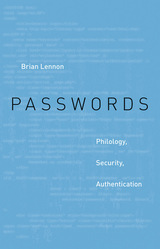
Cryptology, the mathematical and technical science of ciphers and codes, and philology, the humanistic study of natural or human languages, are typically understood as separate domains of activity. But Brian Lennon contends that these two domains, both concerned with authentication of text, should be viewed as contiguous. He argues that computing’s humanistic applications are as historically important as its mathematical and technical ones. What is more, these humanistic uses, no less than cryptological ones, are marked and constrained by the priorities of security and military institutions devoted to fighting wars and decoding intelligence.
Lennon’s history encompasses the first documented techniques for the statistical analysis of text, early experiments in mechanized literary analysis, electromechanical and electronic code-breaking and machine translation, early literary data processing, the computational philology of late twentieth-century humanities computing, and early twenty-first-century digital humanities. Throughout, Passwords makes clear the continuity between cryptology and philology, showing how the same practices flourish in literary study and in conditions of war.
Lennon emphasizes the convergence of cryptology and philology in the modern digital password. Like philologists, hackers use computational methods to break open the secrets coded in text. One of their preferred tools is the dictionary, that preeminent product of the philologist’s scholarly labor, which supplies the raw material for computational processing of natural language. Thus does the historic overlap of cryptology and philology persist in an artifact of computing—passwords—that many of us use every day.
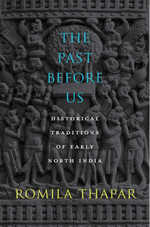
The claim, often made, that India--uniquely among civilizations--lacks historical writing distracts us from a more pertinent question, according to Romila Thapar: how to recognize the historical sense of societies whose past is recorded in ways very different from European conventions. In The Past Before Us, a distinguished scholar of ancient India guides us through a panoramic survey of the historical traditions of North India. Thapar reveals a deep and sophisticated consciousness of history embedded in the diverse body of classical Indian literature.
The history recorded in such texts as the Ramayana and the Mahabharata is less concerned with authenticating persons and events than with presenting a picture of traditions striving to retain legitimacy and continuity amid social change. Spanning an epoch of nearly twenty-five hundred years, from 1000 BCE to 1400 CE, Thapar delineates three distinct historical traditions: an Itihasa-Purana tradition of Brahman authors; a tradition composed mainly by Buddhist and Jaina scholars; and a popular bardic tradition. The Vedic corpus, the epics, the Buddhist canon and monastic chronicles, inscriptions, regional accounts, and royal biographies and dramas are all scrutinized afresh--not as sources to be mined for factual data but as genres that disclose how Indians of ancient times represented their own past to themselves.


This is an analysis of the literary art of recapturing the past as the artist perceives it. By clearly distinguishing different ways of creating a past--in fiction, history, and other arts--Toliver enriches our understanding of literary strategies.
The Past that Poets Make examines such questions as how a fictional narrative differs from other ways of seeing a past time; to what extent literature is nontemporal, transcending its time, and to what extent it is tied to the institutions and traditions of its era; how given works conjure up a sense of time; and how fictional narratives function as transmitters of ideas to societies prepared to absorb them.
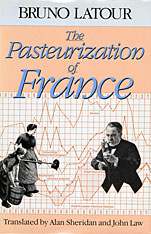
What can one man accomplish, even a great man and brilliant scientist? Although every town in France has a street named for Louis Pasteur, was he alone able to stop people from spitting, persuade them to dig drains, influence them to undergo vaccination? Pasteur’s success depended upon a whole network of forces, including the public hygiene movement, the medical profession (both military physicians and private practitioners), and colonial interests. It is the operation of these forces, in combination with the talent of Pasteur, that Bruno Latour sets before us as a prime example of science in action.
Latour argues that the triumph of the biologist and his methodology must be understood within the particular historical convergence of competing social forces and conflicting interests. Yet Pasteur was not the only scientist working on the relationships of microbes and disease. How was he able to galvanize the other forces to support his own research? Latour shows Pasteur’s efforts to win over the French public—the farmers, industrialists, politicians, and much of the scientific establishment.
Instead of reducing science to a given social environment, Latour tries to show the simultaneous building of a society and its scientific facts. The first section of the book, which retells the story of Pasteur, is a vivid description of an approach to science whose theoretical implications go far beyond a particular case study. In the second part of the book, “Irreductions,” Latour sets out his notion of the dynamics of conflict and interaction, of the “relation of forces.” Latour’s method of analysis cuts across and through the boundaries of the established disciplines of sociology, history, and the philosophy of science, to reveal how it is possible not to make the distinction between reason and force. Instead of leading to sociological reductionism, this method leads to an unexpected irreductionism.


Lawyers and corporations have a vital interest in the regulation and protection of industrial property—patents, designs, trademarks, trade names, and repression of unfair competition—and in the problems raised by agreements between enterprises, nationally and internationally. Since World War II, there has been increasing ferment for changes in the whole system of industrial property. Pressures have been building up from administrations concerned with the functioning of the patent and trademark system; from private enterprises affected by delays, costs, and insecurities of the system; from developing countries anxious to receive and adapt foreign technology at reasonable cost and without excessive restriction; and from the increasing tendency of antitrust law to curb even legal monopolies in order to ensure free competition.
This major work describes the national and international regime of patents, trademarks, technological know-how, and related rights of industrial property; the conflicting interests and demands for recognition and satisfaction in this field; the international efforts and arrangements achieved for harmonization of law and procedure; the problems involved in the transfer of technology for the technical and economic development of countries pressing for assistance; and the controls established by statutory and decisional law against restriction of competition by the exercise of industrial property rights.
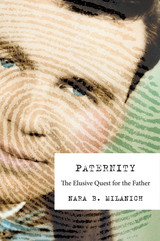
“In this rigorous and beautifully researched volume, Milanich considers the tension between social and biological definitions of fatherhood, and shows how much we still have to learn about what constitutes a father.”
—Andrew Solomon, author of Far from the Tree: Parents, Children, and the Search for Identity
For most of human history, the notion that paternity was uncertain appeared to be an immutable law of nature. The unknown father provided entertaining plotlines from Shakespeare to the Victorian novelists and lay at the heart of inheritance and child support disputes. But in the 1920s new scientific advances promised to solve the mystery of paternity once and for all. The stakes were high: fatherhood has always been a public relationship as well as a private one. It confers not only patrimony and legitimacy but also a name, nationality, and identity.
The new science of paternity, with methods such as blood typing, fingerprinting, and facial analysis, would bring clarity to the conundrum of fatherhood—or so it appeared. Suddenly, it would be possible to establish family relationships, expose adulterous affairs, locate errant fathers, unravel baby mix-ups, and discover one’s true race and ethnicity. Tracing the scientific quest for the father up to the present, with the advent of seemingly foolproof DNA analysis, Nara Milanich shows that the effort to establish biological truth has not ended the quest for the father. Rather, scientific certainty has revealed the fundamentally social, cultural, and political nature of paternity. As Paternity shows, in the age of modern genetics the answer to the question “Who’s your father?” remains as complicated as ever.

From the time of Bismarck’s great rival Ludwig Windthorst to that of the first post–World War II Chancellor, Konrad Adenauer, the Catholic community in Germany took a distinctive historical path. Although it was by no means free of authoritarian components, it was at times the most democratic pathway taken by organized political Catholicism anywhere in Europe.
Challenging those who seek continuity in German history primarily in terms of its long march toward Nazism, Noel Cary crosses all the usual historical turning points from mid-nineteenth- to late-twentieth-century German history in search of the indigenous origins of postwar German democracy. Complementing recent studies of German Social Democracy, it links the postwar party system to the partisan traditions this new system transcended by documenting the attempts by reform-minded members of the old Catholic Center party to break out of the constraints of minority-group politics and form a democratic political party. The failure of those efforts before 1933 helped clear the way for Nazism, but their success after 1945 in founding the interdenominational Christian Democratic Union (CDU) helped tame political conservatism and allowed the emergence of the most stable democracy in contemporary Europe. Integrating those who needed to be integrated—the cultural and political conservatives—into a durable liberal order, this conservative yet democratic and interdenominational “catch-all” party broadened democratic sensibilities and softened the effect of religious tensions on the German polity and party system.
By crossing traditional chronological divides and exploring the links between earlier abortive Catholic initiatives and the range of competing postwar visions of the new party system, this book moves Catholic Germany from the periphery to the heart of the issue of continuity in modern German history.

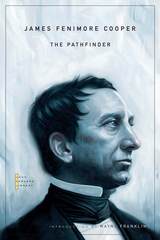
In 1831, James Fenimore Cooper told his publisher that he wanted to write a story set on Lake Ontario. The book was accepted, but with no hint that it would feature Natty Bumppo from the well-established Leather-Stocking Tales. The Pathfinder (1840) revisits Natty’s military service, extending a story begun in The Last of the Mohicans, and introduces the complications of love against the backdrop of the French and Indian War. Wayne Franklin’s introduction describes the personal and financial circumstances that led to Cooper’s resurrection of his most popular character, underscoring the author’s aim to offer Natty as a “Pathfinder” for a nation he feared had lost its moral bearings.
The John Harvard Library edition reproduces the text of The Pathfinder from The Writings of James Fenimore Cooper (State University of New York Press).
Since 1959 The John Harvard Library has been instrumental in publishing essential American writings in authoritative editions.
READERS
Browse our collection.
PUBLISHERS
See BiblioVault's publisher services.
STUDENT SERVICES
Files for college accessibility offices.
UChicago Accessibility Resources
home | accessibility | search | about | contact us
BiblioVault ® 2001 - 2024
The University of Chicago Press









